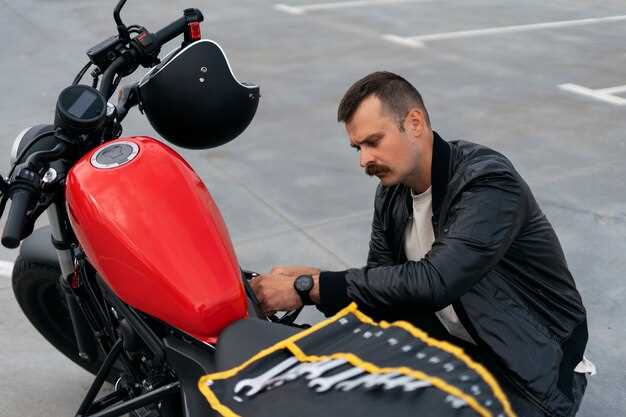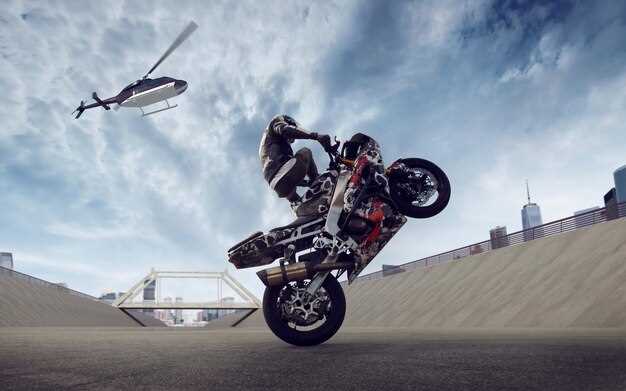
In the world of motorcycles, the streetfighter genre stands out for its raw performance, aggressive styling, and minimalistic approach. Combining the exhilaration of track-ready capabilities with the freedom of street riding, building your own streetfighter motorcycle allows enthusiasts to tap into their creativity and engineering skills. This article will guide you through the essential steps and considerations necessary to transform a standard bike into a formidable streetfighter.
To start your journey, it is crucial to select a base motorcycle that not only meets your performance expectations but also offers ample customization options. The ideal candidate should be lightweight, possess a strong engine, and have a rider-friendly chassis. Consider models like the Kawasaki Z900 or the Suzuki GSX-S750, which have a proven track record in the streetfighter community due to their adaptable platforms.
Once you’ve chosen your bike, the focus will shift to key modifications that enhance agility, power, and aesthetics. Upgrading the suspension for improved handling, implementing exhaust systems for a sportier sound, and shedding unnecessary bodywork are pivotal changes. Additionally, you’ll want to incorporate advanced electronics, such as quick shifters and control modules, to enhance the riding experience.
Finally, safety and legal considerations must not be overlooked. Ensure your modifications comply with local regulations and invest in high-quality braking systems and protective gear to enhance your riding safety. Building a streetfighter motorcycle is not just about performance; it is also an expression of personal style and engineering prowess. Get ready to embark on an exciting adventure of customization!
Choosing the Right Base Motorcycle for Transformation
Selecting the appropriate base motorcycle is crucial for a successful streetfighter transformation. Several factors come into play, including the bike’s style, weight, engine performance, and ease of modification.
Firstly, consider the bike’s overall frame architecture. A lightweight, agile chassis will enhance handling and maneuverability, which is essential in the streetfighter niche. Popular choices often include naked bikes or sportbikes, as their frames are generally more versatile for modifications.
Engine performance is another vital aspect. Look for a motorcycle with a capable engine that can be tuned or modified for greater power. Models like the Suzuki SV650 or Kawasaki Z1000 are favored due to their sufficient torque and aftermarket support, allowing for easy enhancements.
The availability of aftermarket parts also plays a significant role. Opt for models that have a robust aftermarket industry. This ensures you can easily find performance parts, body kits, and accessories necessary for your build. Bikes like the Honda CB series or Yamaha MT line often have extensive catalogs of parts tailored for customization.
Consider your riding style and intended use. Will the motorcycle be used for daily commuting, track days, or weekend rides? Match the base bike to your lifestyle preferences for optimal results. For example, if track performance is a priority, a lightweight sportbike may be more suitable than a cruiser.
Lastly, evaluate the bike’s comfort and ergonomics. Make sure the motorcycle’s seating position aligns with your riding style, as this will affect your overall experience. A comfortable rider is more likely to enjoy the journey and push the bike’s limits.
In summary, when choosing a base motorcycle for a streetfighter transformation, prioritize weight, engine performance, aftermarket availability, intended use, and rider comfort. By carefully selecting a model that meets these criteria, you set the groundwork for a remarkable transformation into a track-ready machine.
Critical Modifications for Performance Enhancement

To transform your streetfighter motorcycle into a track-ready machine, several critical modifications are essential. These enhancements focus on improving power output, handling, and braking performance, ensuring that the motorcycle can handle the demands of high-speed riding.
One of the first modifications to consider is the exhaust system. Upgrading to a high-performance exhaust not only reduces weight but also improves airflow, enabling the engine to breathe better and produce more power. Look for a full system that includes headers and a slip-on muffler, which can result in significant horsepower gains.
Next, tuner or ECU remapping is crucial for optimizing engine performance. An aftermarket ECU allows for fine-tuning fuel maps and ignition timing based on the new exhaust system and intake modifications. This adjustment maximizes the engine’s efficiency, ensuring that it provides peak power across the rev range.
Suspension upgrades are vital for improved handling. Upgrading to adjustable forks and a high-quality rear shock can drastically enhance ride quality and stability. These modifications allow for precise tuning to accommodate different track conditions and personal riding styles. A lowered ride height can also improve cornering performance.
Braking performance is another area of importance. Replacing stock brake pads with performance-oriented options can increase stopping power and reduce fade during aggressive riding. Consider upgrading to larger rotors or higher performance calipers as well; these changes provide improved heat dissipation and better modulation.
Weight reduction is essential for enhancing the motorcycle’s overall performance. Removing unnecessary components, such as the passenger footpegs and stock fenders, can effectively lower the weight. Opting for lightweight materials, such as carbon fiber or aluminum, for various body parts can also contribute to this goal.
Finally, enhancing traction is critical for maximizing cornering ability. Installing a set of premium tires designed for track use can provide better grip and stability. Consider the specific tread pattern and compound based on your riding style and the type of track surface you will encounter.
By implementing these critical modifications, your streetfighter motorcycle will be primed for track performance, delivering an exhilarating and responsive riding experience.
Essential Safety Gear and Regulations for Track Use

When preparing to take your track-ready streetfighter motorcycle onto the racing circuit, ensuring your safety is paramount. Here’s a comprehensive look at essential safety gear and regulations you must adhere to for a successful track experience.
The most critical piece of safety gear is the helmet. It must be a full-face design that meets or exceeds the Snell and DOT safety standards. Look for a helmet that fits snugly and provides comfort while offering maximum visibility. A clear visor is essential, but consider a tinted visor for sunny conditions as well.
Next, a durable riding suit made from leather or high-performance textile is necessary. This suit should cover your entire body, including a back protector. It is designed to absorb impacts and protect against abrasions. Ensure that the suit is properly fitted; it should be snug but not restrictive.
Gloves are equally important, as they protect your hands in the event of a fall. Choose gloves that are made from high-quality leather, offering proper padding and protection for the knuckles. They should allow for a good range of motion while maintaining grip on the handlebars.
Boots specially designed for motorcycle use are crucial. They should be made from sturdy materials that protect your feet and ankles. Look for boots with reinforced toe and heel areas, as well as a slip-resistant sole to maintain traction during rides.
Additional protective gear includes knee and elbow sliders, which can provide extra abrasion resistance during a fall. Body armor, such as chest and back protectors, can also enhance your safety, especially for competitive riders engaging in high-speed track activities.
In terms of regulations, familiarize yourself with the specific requirements of the track you plan to visit. Many racetracks have strict guidelines regarding the type of gear allowed. Be sure to check if they require specific certifications for helmets and suits. Additionally, some tracks may impose restrictions on bike modifications and require certain safety features like safety wire on critical components.
Before hitting the track, conduct a thorough safety check of your motorcycle. Ensure that all critical systems, including brakes, tires, and lights, are functioning optimally. Proper maintenance is crucial for preventing breakdowns or accidents during your ride.
By equipping yourself with the appropriate safety gear and adhering to track regulations, you can enhance your riding experience while significantly reducing the risk of injury. Always prioritize safety, as it is the foundation for enjoying the exhilarating world of track riding.